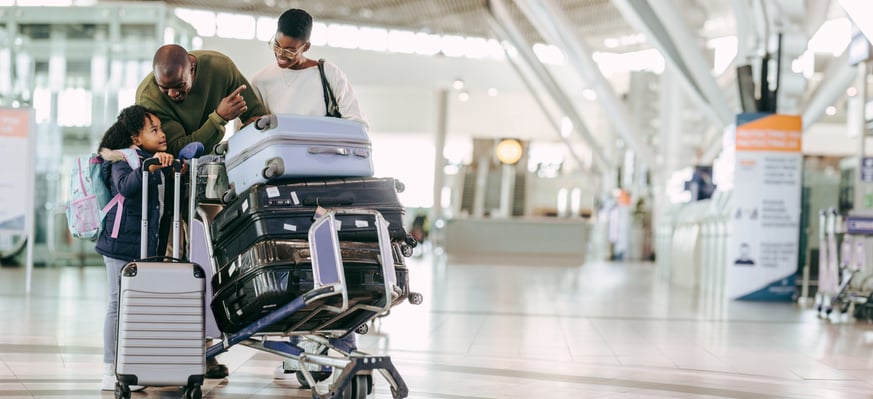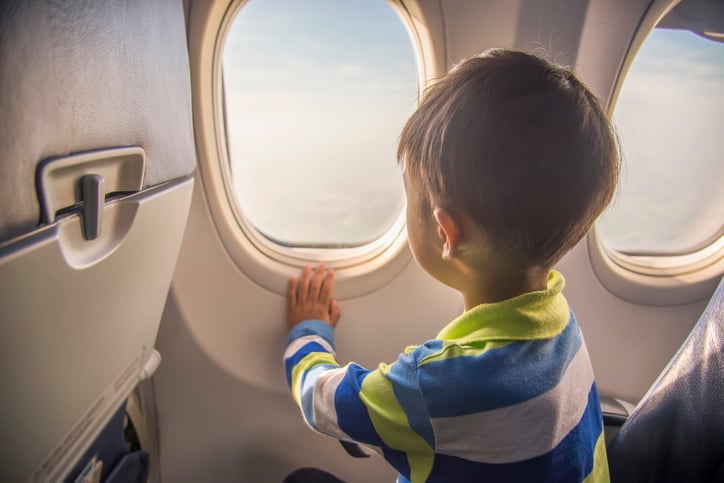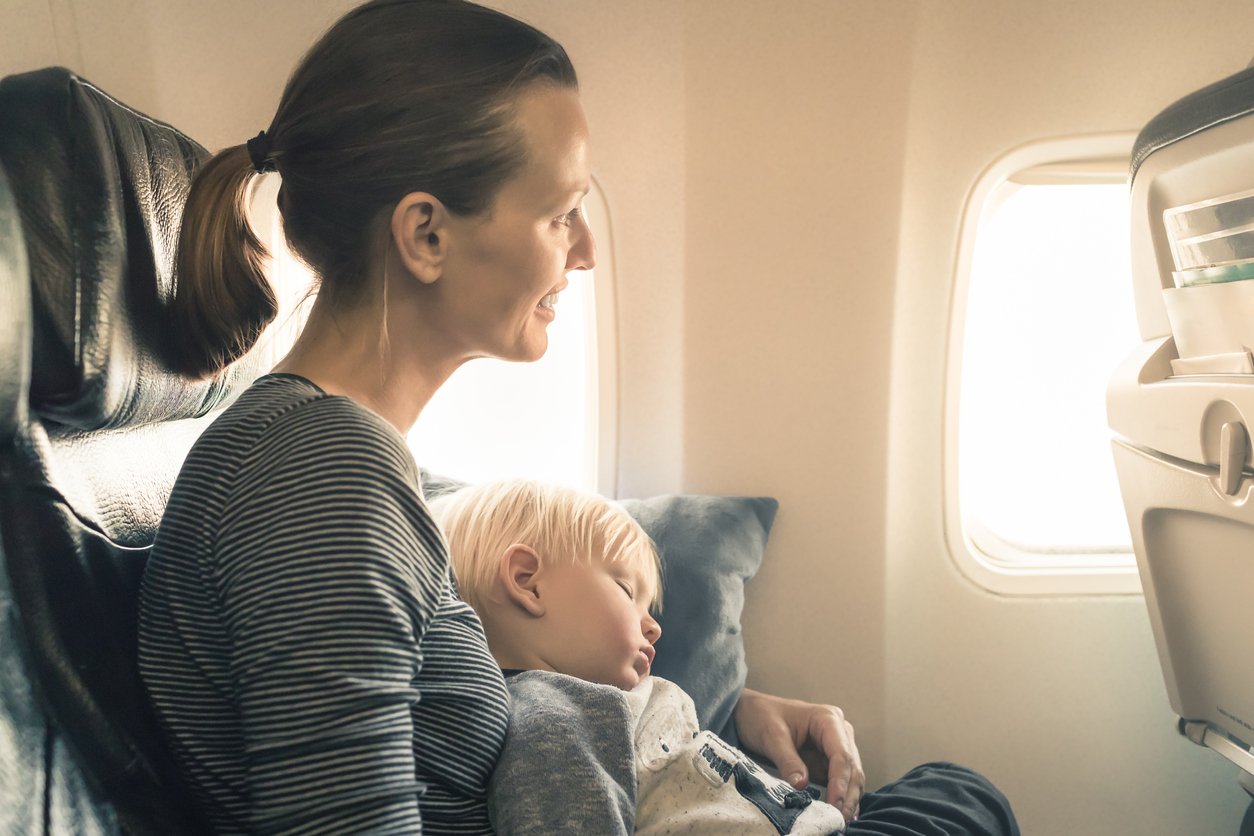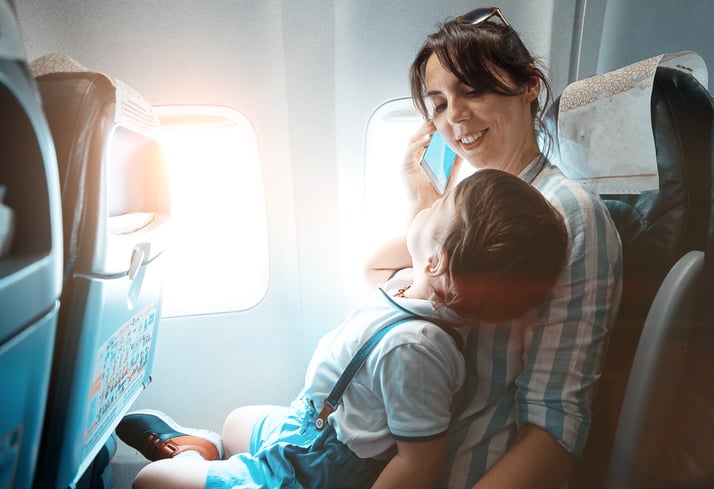Air Travel with Autistic Children: 8 Ways to Prepare
Taking a plane trip can be taxing for anyone, especially when traveling with children. Adding an autistic child with unique sensory challenges into the mix can make air travel even more difficult.
In my newest book, Autism on a Shoestring Budget, I tell the story of moving from the East Coast to the West Coast with my grandson in 2012. He was 6 years old then and his being autistic presented with several challenging behaviors, including bolting, sensory issues that did not allow him to sit for very long, and very little patience to wait in line. I was worried about how he would take the trip and if he would melt down in the busy airport or during the long flight.
A friend suggested I prepare my grandson well ahead of the trip and she gave me some great tips. Here’s what I did, and what you can do as you prepare to travel by air for vacation or otherwise with your autistic child.
1. Prepare Your Child Ahead of Time
Changes in routine are difficult for autistic children. Frontloading them with what will happen so they are somewhat prepared for an out-of-the-ordinary event such as a plane trip can help alleviate some of the anxiety they may experience as they venture into unknown territory.
I put up a countdown calendar for my grandson and printed out a social story for him detailing our move to the West Coast, which we read every time we crossed off a day on his calendar. The social story included pictures along with a step-by-step outline of what would happen on the day of departure.
2. Contact Airport Customer Service Support
Contacting airport customer service to ask for help with checking in and clearing security can make a big difference.
I called and explained my situation to the airport manager and asked if she could help me make my grandson’s travel experience as pleasant as possible by contacting airport security and asking them for special assistance. She explained that normally special accommodations are provided only for people with physical disabilities, but because she had an autistic family member, she understood my need for assistance right away. When I explained that my grandson may not do well in a crowd or standing in long lines, she went out of her way to make prior arrangements for us not just with security, but with the airline desk as well.
Since 2012, several airlines have now offered special pre-boarding assistance and preferred seating to families who travel with an autistic individual, and The Arc developed the Wings for Autism program to introduce autistic individuals to flying. More information about this is listed below.
Checking in our baggage and getting our boarding passes was a breeze, and when we arrived at security, they ushered us through the flight personnel check-in line, which helped us avoid the crowd and extremely long lines at this busy airport. The whole security procedure didn’t take more than 10 minutes.

3. Make a Travel Checklist
Depending on the age and reading ability of your child, you may want to prepare a visual travel checklist, with or without pictures, for your child to check off during the trip.
Since my grandson is a hyperlexic reader, I simply wrote a visual checklist in my notebook for him to follow and check off as we completed each step of the journey. It was engaging for him and helped him know ahead of time what was coming next.
STAGES® Learning Sequencing Cards can help with practicing the “first, next, then, last” steps of your trip.
4. Prepare Some Fun Wait-time Activities
Once through security, there is often a wait time before boarding the plane. This is a great time to get some movement in, especially before a long flight. Play Stop/Go or “I Spy with My Eye!” games while you walk through the terminal.
Since checking in and clearing security had been so fast, we still had a bit of a wait before it was time to board, so we explored and took some good walks through the terminal and made several trips to the bathroom as well. My grandson was thrilled to discover some old-fashioned payphones and spent quite a bit of time “calling” different people: “Hello?” “Goodbye!”
5. Prepare Travel Activities and Favorite Snacks
Have a bag of favorite toys handy to distract and occupy your child during the flight, as well as some of your child’s favorite snacks in case your child may not like the in-flight snacks or meals.
I brought different activities for my grandson, such as a small storybook about an airplane trip with reusable stickers to place on the pictures of airports and planes, and I made sure his V-Tech games were loaded with fresh batteries too. He hardly used those, however, as he was so fascinated with all that happened around him. I also hardly needed any of his snacks, and to my surprise, he loved eating his airplane dinner on the tray in front of him.
6. Talk Through Takeoff and Landing Sensory Issues
Most autistic children experience sensory issues. The sensation of taking off and landing while aboard an airplane can be very overwhelming for them. Prepare your child ahead of time by describing the sensory experience the best you can. Also, have some gum or a treat on hand in case popping ears cause discomfort during takeoff.
Once we boarded, my grandson was so excited! His nose was glued to the window when the airplane started taxiing down the runway, but as soon as the airplane started moving fast, he slammed the window cover shut and didn’t want to look out again until well after takeoff and the plane had stabilized.
Thanks to preparing him ahead of time, he took the sensory experience of takeoff extremely well. Wide-eyed, he held onto the seat’s armrests very tightly and sat very still until the plane steadied while chewing on a candy. He then gingerly opened the window cover and was ecstatic to see the clouds and the world below. “Grandma, I can see the WHOLE world!” he shouted.

7. Consider Restroom Options
Taking a young autistic child to the restroom on an airplane can also be challenging. The plane is moving, the restroom is very small, and the flushes are generally very loud. Talking about it and showing pictures of what the restroom will look like can help.
Due to his sensory issues, my grandson could get very upset at loud sounds, especially loud toilet flushes, so I was quite concerned that taking him to the bathroom could result in a meltdown.
My friend suggested not flushing until my grandson had already stepped outside the restroom, or not flushing at all and asking for assistance should that be too difficult. Thankfully, he was fascinated with all the “new” things he saw in the restroom, and by using the first flushing tip, the multiple restroom trips were successful!
8. Ask for Inflight Support
Don’t hesitate to ask for inflight support from the flight attendants. If you notify the airline ahead of time that you are traveling with an autistic child, they may already be aware and offer their help when needed. But if not, alert the crew right from the start that you may need their assistance.
During the flight, my grandson played quietly with his toys and even took a short nap covered by his favorite blankie and with his head in my lap.
When the attendants noticed him getting restless, they were right there to distract him with a little treat or toy. He whimpered a few times and needed to walk around and stretch his legs often, which thankfully didn’t cause any problems. Had he melted down, I am sure they would have been equally helpful and understanding.
When we arrived at our destination and crossed off the last entry on my grandson’s checklist, I heaved a sigh of relief. All the preparation had paid off and the whole trip went by without a hitch—and what’s more, without a meltdown!

Traveling by plane with an autistic child is not easy and may at times be outright difficult. However, preparing your child ahead of time and asking for help from service providers can make a big difference and make a plane trip a positive, exciting experience and happy memory for you and your child—as it did for my grandson and me.
If you're planning for upcoming travel and are not sure which airline to choose, take a look at our list of airlines that offer special assistance to individuals with autism.
Do you have any tips for airplane travel with autistic children? We’d love to hear in the comments section.

Ymkje Wideman-van der Laan
Ymkje Wideman-van der Laan is an author, public speaker, and Certified Autism Resource Specialist from the Netherlands. After working abroad as a teacher and humanitarian for 25 years, she moved to the US in 2006 and assumed the care of her then 6-month-old grandson, Logan. There were signs of autism at an early age, and the diagnosis became official in 2009. She has been his advocate and passionate about promoting autism awareness and acceptance ever since. Logan is the inspiration behind the Autism Is...? (tinyurl.com/5aj73ydd) series of children’s books she initially wrote for him and later published. Ymkje currently lives in California with her now 15-year-old grandson, and besides writing, presents autism training workshops for early childhood educators, parents, and caregivers. You can read more about her story in her newly released book, Autism on a Shoestring Budget, [Early] Intervention Made Easier (https://tinyurl.com/ysxhxbmf). For more information, you can visit www.autism-is.com, www.facebook.com/AutismIs, and/or contact her at autismisbooks@gmail.com.




